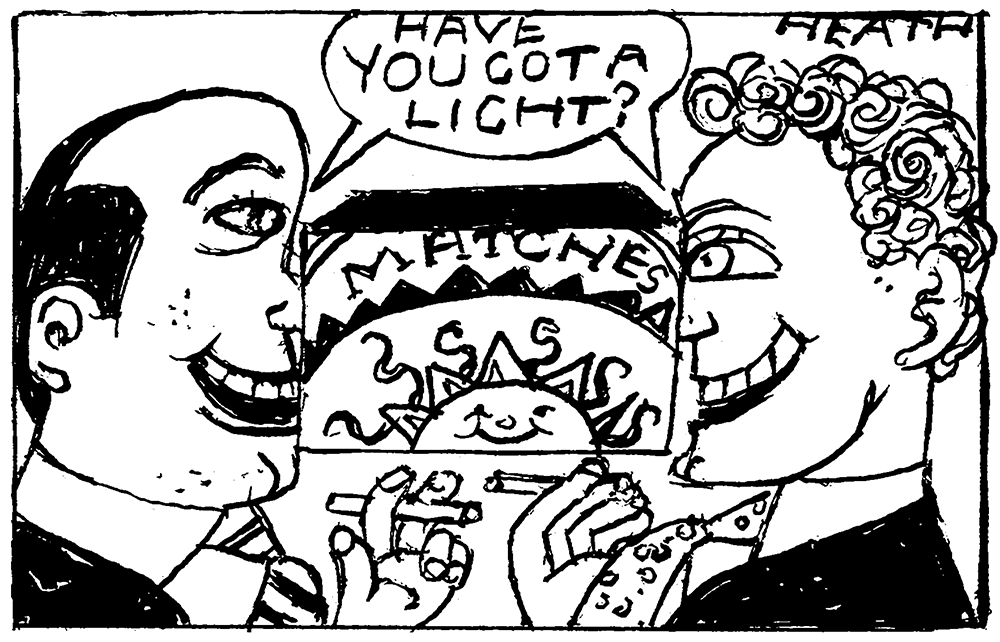Christopher Howse has narrated this article for you to listen to.
We’d been told it would be a ‘brat’ summer, characterised by its inventor, the singer Charli XCX, as ‘a pack of cigs, a Bic lighter and a strappy white top with no bra’. It hasn’t worked out like that for me, so I was glad to discover a counter-culture valuing matches over throwaway lighters.
Young people, so the Wall Street Journal tells us, are collecting matchbooks and matchboxes and sharing their collecting habit on TikTok. I suppose it’s better than swapping pictures of their burgers.
Once things are collected (as anything can be), exclusive rules put half the world in the wrong. To the ‘phillumenists’ of the British Matchbox Label and Bookmatch Society (founded 1945) a great crime is ‘Neighbouring a skillet’. A skillet is the pre-printed rectangle of cardboard ready to be folded into a matchbox. A famous collector called Peter Neighbour thinned these by paring the back surface. Purists regard this as fatal damage.
To me there is little point collecting matchbooks run up now as bait for collectors by a bar where smoking is illegal. Matchboxes belong to the two centuries that required a flame to light tobacco, candles and fires. Just as cigarettes were decanted into cigarette cases, so in the 19th century vesta cases of silver or cheaper metal held non-safety matches made of wax-soaked cotton.
It was shocking to read in Death Comes to Pemberley, P.D. James’s whodunnit set in 1803 in the world of Pride and Prejudice, a reference to Darcy lighting candles with the ‘taper and matches’ to hand. Matches were invented in 1826. John Walker, a Stockton-on-Tees pharmacist, developed ‘sulphuretted peroxide strikeables’ and sold his first (metal) box of matches on 7 April 1827 to a fellow Stocktonian for a shilling. The British Matchbox Label and Bookmatch Society hopes to celebrate the bicentenary by making a film about Walker, if it manages to gain a grant from the National Lottery Heritage Fund.
An early impetus for foreign collectors had come on 30 June 1892 when the Spanish government established a monopoly in match production. It sold vestas in boxes with a hinged lid held shut by an ingenious piece of rubber band. (The rough striker surface was on the short end, typically striped in red and gold like the Spanish flag.)
Between the lid and the compartment full of matches were inserted little cards, fototipias, bearing photographs of actresses, painters, bullfighters, like later cigarette cards. Between 1897 and 1910, 3,175 different fototipias were produced. The monopoly even printed cards on which collectors could mount them. One mount for the bullfighter series depicts a dead horse in the arena.
In collecting, rarities arise unexpectedly. Norman Balon, the landlord of The Coach and Horses when Jeffrey Bernard, The Spectator’s Low Life columnist, used it as his office, had matchboxes printed ‘Norman Balon, London’s Rudest Landlord’, with the name of his ‘Most Charming Wife’. On their divorce he spent hours sitting at the table near the gents’ lavatory determinedly scratching her name off hundreds. Any left unscratched would now be a collector’s item.





Comments